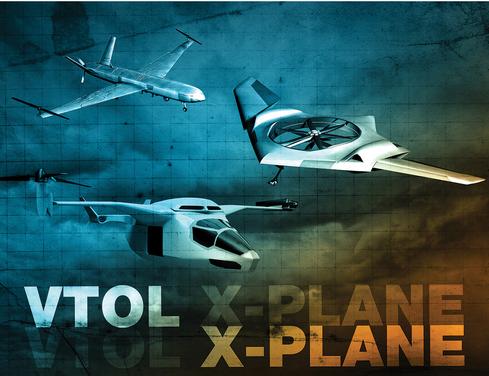New DARPA Office Merges Biology And TechnologyNew DARPA Office Merges Biology And Technology
The Biological Technologies Office will focus on using neuroscience, sensor design, microsystems, and other technologies for defense purposes.

DARPA Next-Gen Aircraft: Sneak Peek
DARPA Next-Gen Aircraft: Sneak Peek (Click image for larger view and slideshow.)
The Defense Advance Research Program Agency (DARPA) has created a division that merges biology, engineering, and computer science to advance technologies for national security.
The goal of the Biological Technologies Office (BTO) is to develop next-generation systems that are inspired by the life sciences. Biology is among the core sciences that represent the future of defense technology, DARPA said. The BTO will expand on the work already carried out by DARPA's Defense Sciences (DSO) and Microsystems Technology (MTO) Offices, particularly in disciplines such as neuroscience, sensor design, and microsystems.
DARPA director Arati Prabhakar has named Geoff Ling as the first BTO director.
[How have the IRS and other agencies managed to improve services despite budget restraints? Read Federal Agencies Win Awards For Innovative IT.]
The new office will initially focus on programs transferred from DSO and MTO, but it will also handle several fresh projects. One of them is Hand Proprioception and Touch Interfaces (HAPTIX), which seeks to create interfaces for limbs that provide amputees with innate feeling and function. The HAPTIX program covers the development and testing of the neural interface, electronics, and packaging technologies for controlling and sensing the prosthesis.
Developing prosthetic technology and nerve interfaces for amputees has long been a focus for DARPA. The agency launched its Revolutionizing Prosthetics program in 2006 and has since added programs like Reliable Neural-Interface Technology (RE-NET) to the portfolio. RE-NET is leading research to develop high-performance, reliable peripheral interfaces that use signals from nerves or muscles to control prosthetics and to provide direct sensory feedback.
The BTO will primarily focus on three research areas: restoring and maintaining warfighter abilities, harnessing biological systems, and gaining new insights into biological complexity and living-system dynamics to cultivate applications for human well-being. These focus areas involve everything from brain research to new methods of fighting infectious diseases.
Bio-technology is "of growing interest and importance to DARPA, and among the most promising for future major capabilities," Prabhakar said in March 26 testimony before the House Subcommittee on Intelligence, Emerging Threats, and Capabilities. "Biology is nature's ultimate innovator, and any agency that hangs its hat on innovation would be foolish not to look to this master of networked complexity for inspiration and solutions."
Living Foundries was among the programs Prabhakar discussed during the hearing. She said the program is producing new classes of materials with properties for enabling the next generation of mechanical, optical, and electrical products.
She also addressed a more pressing subject of chemical and biological weapons, saying that researchers would typically need decades to gain a "cellular-level understanding" of how new threat agents affect people. A five-year program called Rapid Threat Assessment (RTA) aims to understand the molecular mechanism of threat agents, drugs, biologics, and chemicals. According to DARPA, the goal is to develop countermeasures to chemical and biological weapons within 30 days of exposure to a human cell.
Cyber-criminals wielding APTs have plenty of innovative techniques to evade network and endpoint defenses. It's scary stuff, and ignorance is definitely not bliss. How to fight back? Think security that's distributed, stratified, and adaptive. Read our Advanced Attacks Demand New Defenses report today (free registration required).
About the Author
You May Also Like






